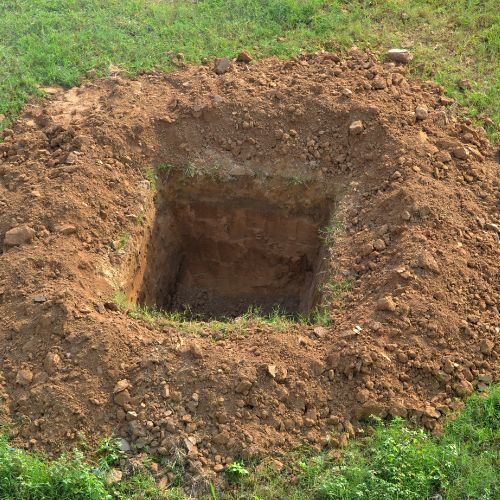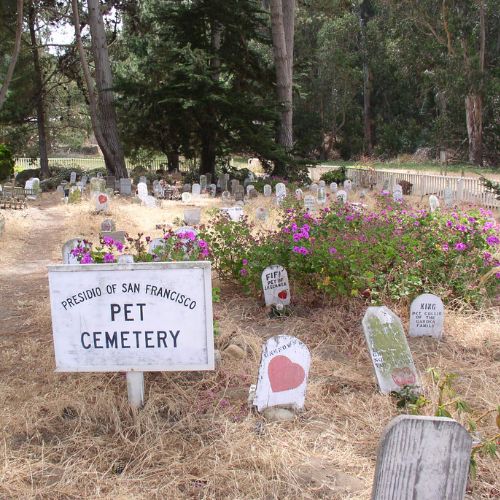Losing a beloved pet is heartbreaking, and finding the right way to honor their memory can bring comfort during such a difficult time.
One common option is to bury your pet after they pass away. In this comprehensive guide, we will explore different options for pet burial, and the rules and regulations surrounding backyard pet burial.
Different Options for Pet Burial
When it comes to burying your pet, there are several options to choose from depending on your preferences and local regulations.
The most common choices include backyard pet burial, a pet cemetery, or opting for cremation. Each option offers its own benefits and considerations, so let’s explore them further.
Burying Pets in the Backyard: Rules and Regulations
Burying your pet in your backyard is a cherished tradition for many pet owners, allowing them to keep their beloved companions close to home. However, it is important to be aware of the rules and regulations surrounding backyard pet burial, as they can vary by state and city.
In most states, burying pets in residential areas is legal, as long as certain guidelines are followed. These guidelines typically include:
- The pet must be buried a certain distance from water sources, property lines, and wells.
- The burial site should be adequately marked and maintained to prevent any disturbance.
- Some states may require a specific burial depth or the use of burial containers for larger pets.
To ensure that you comply with the regulations in your area, it is advisable to check with your local government or animal control agency for specific guidelines regarding backyard pet burial. I have included some links below to official sources to help you find the most recent information.
Backyard Pet Burial Laws by State: Key Points and Requirements

When considering pet burial, it is crucial to understand the laws and regulations specific to your state. While we cannot cover every state in detail, we will provide an overview of some key points and requirements for a few states.
California
In California, pet owners are allowed to bury their pets in their backyard as long as certain conditions are met. The burial site must be at least 2 feet above the water table, and the pet’s body must be placed in a rigid container to prevent the spread of disease.
Texas
In Texas, burying pets in your backyard is generally allowed. We were unable to locate specific rules for domestic animals, however, livestock or fowl burials must be covered by at least 3 feet of earth.
The Tex. Admin. Code § 59.12 also states “The location of a burial site shall comply with any applicable setbacks for sanitary or public health reasons.”
New York
In New York, burying pets on private property is permitted unless the pet showed signs of rabies, was scratched or bitten by another person or pet (also relates to rabies), or is a deer.
Animal Care Centers of NYC also offer pet cremation for a $50 fee. This would be group cremation at this price and no ashes are likely to be returned.
There are no other specified regulations on the NYC 311 page at the time of writing.
Florida
In Florida, pet burial in your backyard must be two feet below ground, and above a water table.
Domestic animals include cows, goats, sheep, pigs, dogs, cats, poultry, or any other domesticated beast or bird.
The Department of Environmental Protection in Florida states they prefer cremation for deceased pets over burial, however, this is only a preference, not a law.
They also prefer that euthanized pets be placed in Class I landfills, which have a liner system and leachate collection system, along with groundwater monitoring wells to identify any groundwater impacts.
If your beloved pet was euthanized and you can’t bear to place him or her in a landfill – I know I couldn’t – I recommend choosing a non-biodegradable pet casket and burying it at least two feet deep to comply with the regulations.
Illinois
In Illinois, pet owners are permitted to bury their pets on their private property with the following requirements:
- You must choose an area where runoff or leachate will not contaminate any water supply
- The site must be at least 200 feet from a stream or any potable water supply source
- The site must be at least 200 feet from any existing residence not owned or occupied by the owner of the animal
- The pet must be covered by at least 6 inches of compacted soil, with precautions taken to minimize soil erosion
- Lime or other chemical agents to prevent decomposition are not permitted
- Precautions should be taken to prevent disturbance by animal or mechanical means
Please refer to the Illinois Environmental Protection Agency website for the latest information.
Ohio
In Ohio, burying pets in your backyard is allowed providing it is at least four feet below ground.

Pennsylvania
In Pennsylvania, backyard pet burial is allowed in accordance with regulations governing water quality. The site must be:
- Outside a 100-year floodplain
- At least 100 feet from any water source
- At least 100 feet from the property line
- Covered by at least 2 feet of soil
Your pet should also be buried within 48 hours of death.
Georgia
In Georgia, pet owners are allowed to bury their pets in their backyards. Follow these rules and regulations set out by the state of Georgia:
- Pet burial should take place within 24 hours after death
- The burial site must be more than 100 feet away from any existing or proposed water supply lines and wells
- The burial site must be 15 feet away from the edge of any embankment
- The burial site must be 100 feet away from the seasonal high water level of any body of water including wetlands, ponds, lakes, streams, or tributaries
- The burial site must not be in any area with dry stream beds, gullies, ravines, natural or man-made drains, sinkholes, 100-year flood plains or anything of the like
- Your pet should be covered by at least 3 feet of earth, but the hole must be no more than 8 feet deep
North Carolina
In North Carolina, burying pets in your backyard is permitted as long as it is at least 3 feet below ground. The burial site should be at least 300 feet away from any flowing stream or public body of water.
Michigan
In Michigan, backyard burial of pets is permitted, as long as you have the landowner’s permission. The grave should be at least two feet deep, and the remains must not come into contact with any bodies of water, including groundwater, lakes, streams, open drains, rivers etc.
If there is an existing groundwater well or potable water supply the burial site should be positioned at least 200 feet away.
If you need to temporarily store your deceased pet you can do so in cold storage at a maximum of 40 degrees Fahrenheit for up to seven days. Alternatively, freeze at zero degrees Fahrenheit for up to 30 days, then bury in accordance with the rules above.
For more information, the Michigan Department of Agriculture can help.
Virginia
The Code of Virginia states “The owner of any companion animal shall forthwith cremate, bury, or sanitarily dispose of the animal upon its death.”
We were unable to locate any specific rules on how or where to bury a companion animal.
Other Pet Burial Options:

Pet Cemeteries: A Dedicated Resting Place for Pets
Pet cemeteries provide a dedicated and serene resting place for pets, offering pet owners the comfort of knowing their companions are laid to rest in a beautiful and well-maintained environment. These cemeteries often offer various services, including plot selection, casket options, and personalized memorials.
Choosing a pet cemetery allows you to pay tribute to your companion in a way that feels special and dignified. Many pet cemeteries also offer additional services such as grief counseling and memorial events, providing support during the mourning process.
Cremation: An Alternative to Traditional Burial
Cremation offers an alternative to traditional burial, providing pet owners with a tangible way to keep their pet’s remains close. With cremation, your pet’s body is respectfully and carefully placed in a crematorium, where it is reduced to ashes.
Some pet owners opt for communal or private cremation, where multiple pets are cremated together or individually, respectively.
After private cremation, you have several options for what to do with your pet’s ashes. Some people choose to keep the ashes at home in an urn or a special container, while others decide to scatter them in a meaningful location.
With communal cremations, your pet’s remains are cremated with other deceased pets, and therefore, the ashes are not returned. This is the most affordable option for pet cremation.
Creating Pet Remembrance Stones
One way to honor your pet’s memory is by creating a pet remembrance stone. These stones serve as a lasting tribute to your furry friend and can be placed in your backyard, garden, or any special place that holds significance for you.
To create a pet remembrance stone, you can use a variety of materials such as concrete, resin, or even natural stones. Engrave your pet’s name, a personal message, or their paw print onto the stone to make it truly unique and meaningful.
This simple yet heartfelt gesture can bring solace and serve as a cherished reminder of the love you shared.
Preserving Pawprints as Keepsakes
Preserving your pet’s pawprint is another way to keep their memory alive. There are various methods for creating pawprint keepsakes, including using non-toxic clay, ink pads, or even specialized kits designed specifically for this purpose.
By capturing your pet’s pawprint, you can create a tangible reminder of their presence in your life. These keepsakes can be displayed in shadow boxes, framed, or even used as ornaments. They serve as a beautiful and heartfelt remembrance of the bond you shared with your beloved companion.
Final Thoughts
Understanding the options and laws surrounding backyard pet burial can help you make informed decisions when saying goodbye to your companion.
Whether you choose to bury your pet in the backyard, at a pet cemetery, cremate, or create lasting mementos, the most important thing is to honor your pet’s memory in a way that brings you comfort and peace.

